Our first Chilean road led us to the island of Chiloé of the Los Lagos area (equivalent to the Lake District of Argentina) that quickly became one of my favourite places in this trip. It was quite a strange coincidence that we happened to come here on a rainy weekend, the only rainy days interrupting a sunny period. Arriving there however, I found the island utterly charming and poetic in the bad weather.
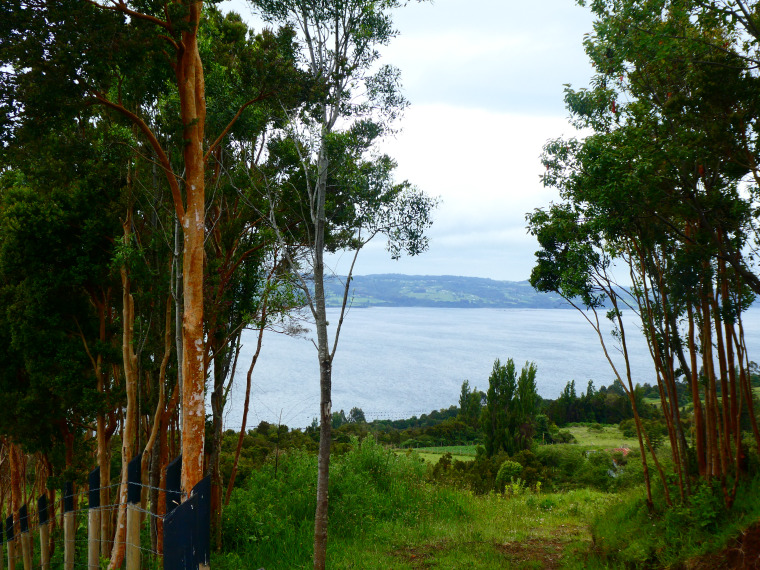
Chiloé archipelago
Apart from the main island there are more than 40 small islets dotted around, all hilly and curvy. The winding roads on the hilly landscape run through lush forests with wildly curving arrayan trees (typical of this part of Chile), grazing lands with cows and tiny villages of faded colourful, wooden houses. The rainy, misty weather gave a mystical feel especially to the coastal areas where rock and forest drops into the Pacific Ocean – I marvelled at this view during our hitch on Lemuy islet from the higher seat of a road work truck.
The other islands that we visited are quite similar: small villages scattered around the land, an artisanal market and a small, wooden church in the centre – typical architecture from the island. These wooden churches of Chiloé made it to be recognized by UNESCO.
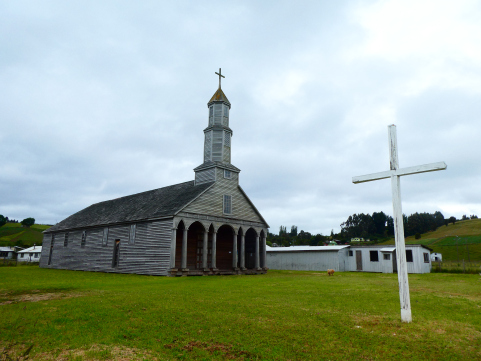
Castro, the capital of the island of Chiloé
We stayed in Castro which is the biggest (still cute and small) town, in the middle of the main island – a strategically well located town to explore the area. Renowned for its iconic palafitos, colorful stilted houses lining the waterfront, Castro offers a picturesque setting that reflects the island’s maritime heritage. The town is a haven for those seeking an authentic Chilote experience, with its traditional markets brimming with local crafts, fresh seafood, and indigenous products.
What to visit in Castro
- Iglesia de San Francisco: a stunning UNESCO-listed wooden church that stands as a testament to Chiloé’s architectural prowess
- Iglesia Nuestra Señora de Gracia de Nercón: or simply Church of Nercón is another UNESCO-listed church near Castro
- Feria Campesina Yumbel: local farmers market with fresh fruit, other produce and local handicrafts, such as wool socks, sweaters and more
- Palafito de Gamboa: a cultural and historical center that provides insight into Chiloé’s folklore and traditions

Chiloé National Park
Chiloé National Park, covering over 430 square kilometers, is nestled on the western coast of the island – and I’d say it’s a must to visit for everyone enjoying nature and shorter or longer walks. It is in a wetland area that encompasses dense rainforest (tepual), swamps, peat bogs and coastal dunes. It’s a unique place where the vegetation of a freshwater lake and salty ocean meet. Visitors can witness the convergence of the Andes and the Pacific Ocean, creating a breathtaking landscape that seamlessly blends mountains, fjords, and ocean vistas.
There are several shorter and longer hikes in the park, where visitors can explore the different landscapes. Some shorter walks are on the boardwalk – a good option for families with young kids or visitors with reduced mobility. There’s also a 2-day hike within the park, where having your own tent is necessary.
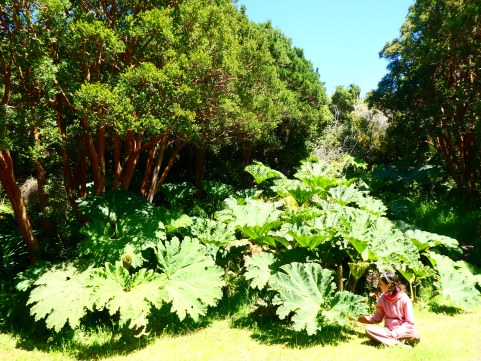
Hikes in Chiloé National Park
The park boasts three areas (sectors): Cucao-Chanquín and Cole-Cole in the south, and Chepu in the north. Between the southern and the northern sectors, there’s an area which isn’t part of the national park, strangely. The southern and northern sectors can be reached separately, and for us, it was easier to get to Cucao-Chanquín sector from Castro by public bus, getting off at Cucao.
The below table shows (almost) all the available hikes in Chiloé National Park, and their distance / estimated duration.
Hiking route | Distance | Est. time | Difficulty |
| El Tepual (interpretation trail) | 0.75 km/0.4 mi | 40 mins | Easy |
Dunas de Cucao (Cucao Dunes) trail | 1.4 km/0.8 mi | 1 hour | Easy |
Río Cole Cole-Río Anay trail | 5 km/3 mi | 1.5 hours | Medium |
Río Chepu-Río Lar trail | 16 km/10 mi | 8 hours | Difficult |
Chanquín-Cole Cole trail | 16 km/10 mi | 8 hours | Medium |
Chanquín-Río Grande trail | 15.5 km/9.6 mi | 8 hours | Medium |
| 18 km/11 mi | 8 hours (2 days) | Difficult |
For more information see the national park’s information leaflet (in Spanish).
As for us, we would have LOVED to do the 2-day Castro-Abtao hike, but not having a tent and warm enough clothes, we opted for a day trip with shorter hikes on boardwalk. Still, the tepual forest gave a magical feeling, like a scene from The Lord of the Rings.
The entrance price to the national park is 6000 CLP per person (foreigners) in Jan 2024 – check the current value on Chiloé National Park website (in Spanish).
Our best multi-day hikes in Patagonia post features the 2-day hike in Chiloé National Park
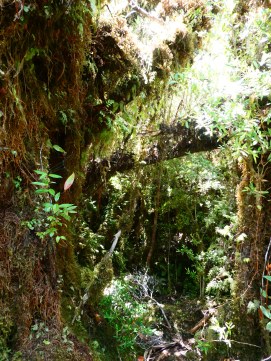
Other great places not to miss on Chiloé island
Quinchao
Quinchao is the popular and charming island situated just off the eastern coast of Chiloé, connected to the main island by a ferry. Visitors can of course see more examples of the colourful, wooden architectural style and the wooden churches, Chiloe is known for. Particularly interesting the Church of Quinchao, which is recognized as a UNESCO World Heritage site.
Dalcahue
Dalcahue, located on the eastern coast of Chiloé, is renowned for its bustling markets and the iconic Dalcahue Bridge connecting the mainland to the island of Quinchao. The town’s Feria Artesanal, or Craft Fair, is a vibrant hub where artisans display their intricately crafted goods, including traditional Chilote textiles, ceramics, and wooden crafts. Don’t miss the Dalcahue Church, another UNESCO World Heritage site.
Lemuy island
Smaller and further Lemuy Island, located to the south of Chiloé, is another gem worthy to be discovered. Characterized by rolling hills, dense forests, and coastal beauty, it’s a peaceful place to chill down, walk the streets of rustic villages and enjoy Pacific Ocean views. Of course, the island is also home to several well-preserved wooden churches, including the Church of Aldachildo.

Puñihuil
Puñihuil, on the northwest coast of Chiloé, is a unique place because Magellan and Humboldt penguins breed from spring till autumn. Boat tours from Puñihuil offer a rare opportunity to witness these charismatic birds in their natural habitat, alongside other marine life like sea lions and cormorants. Just head to the coast and you’ll find the regular boat tours.
Ancud
Ancud, the second biggest town on Chiloé is nestled on the northern coast of Chiloé Island, renowned for its maritime charm. Once the island’s capital, Ancud is home to the Museo Regional de Ancud, a captivating museum that delves into Chiloé’s history, from its indigenous roots to the arrival of the Spanish colonizers. The town’s iconic Fort San Antonio, perched on a hill overlooking the sea, offers panoramic views.
Muelle de las Almas
Muelle de las Almas, or “Soul’s Dock,” is a mystical and intriguing location on Chiloé Island, Chile. Located near the village of Cucao, this wooden dock extends into the calm waters of Cucao Lake and is surrounded by dense forests. According to local folklore, this place is believed to be a sacred spot where the souls of the departed gather before crossing over to the afterlife.
Check out the full list of what to do in our post about 15 enchanting things to do in Chiloé
Hitchhiking at the Chiloé island
Another great thing, we managed to hitchhike on the whole of Chiloé island. Cars stopped sometimes instantly when we stuck out our finger. Locals (called Chilotes) are very nice, but their accent and speed of talking sometimes made the conversation impossible for me.
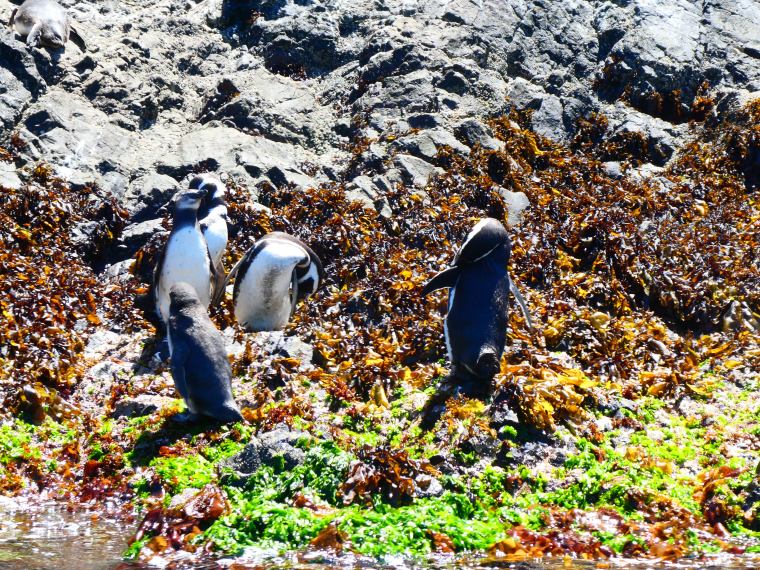
Off the beaten track
The island of Chiloé is not such a high-profile destination compared to the southern part of Patagonia but still, based on locals’ stories and by the number of accommodation we’ve seen available, it’s a summer hit for holidaymakers. Luckily we were there at springtime, before the crowds arrived. Although the area is small, we had the feeling that we could spend a month there easily, exploring the beautiful nature around.

Getting to Chiloé
Chiloé is situated in the north of Chilean Patagonia, in the Los Lagos region. The nearest airport is Puerto Montt, which is also a big transportation hub from where there are direct buses to Castro. So if you are already in Chile, a more sustainable traveling option is taking a bus – a long-distance night or day bus – to Puerto Montt, and changing there towards Castro.
In any case, traveling to Chiloé involves taking the ferry. In this post, you’ll find a complete guide with options on how to get to Chiloé.
Chiloé features in our backpacking in Patagonia guide, along other amazing Patagonian destinations, take a look

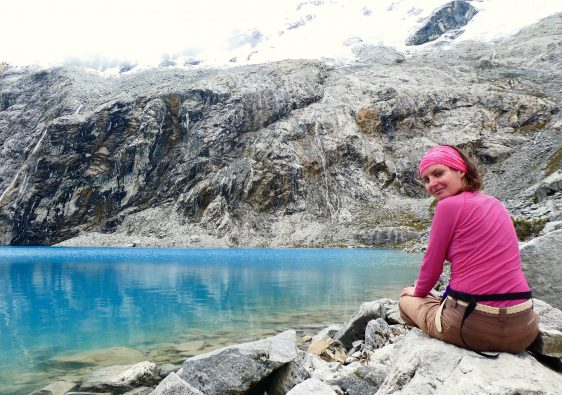


Micsoda “apu-levelek”..:) Nagyon szép és kedves helyen vagytok..
Je trouve ce blog si intéressant, plein de conseils, riche en découvertes et photos, que je me suis permise de l’annoncer dans un Forum de Voyage dont je suis membre depuis de longues années: EXPAT.com
Accepteriez vous d’afficher leur logo à l’aide de ce lien ? merci…
Beautiful photos. I’d love to see more animals in their natural habitat. So far the British isles have given us many fond memories of seal and beautiful wild birds but perhaps not quite the same league! Hehe. X
I wish we had seen more wild animals but we’re really not keen on ‘wildlife tours’ where we don’t know how animals are treated. A free and happy animal is the best sight, even in Kingston-upon-Hull 🙂 Thanks for your visit Lizzie!
Couldn’t agree more…especially as a former resident of Kingston upon Thames! 🤣😉
What a beautiful place. I haven’t seen penguins and whales in their natural habitat, but I would love to for sure.
South America is (still) a wildlife haven. Whales and penguins can be spotted in different parts of Chile, but also in Ecuador, in Colombia, in Argentina on the Atlantic. Those are all places where you can seek (and find) Wonderful 🙂 Thanks for popping by!
This is just right on my alley! The pic of stilt houses reminded me of the gypsy houses in Malaysia and the Philippines. The poetic landscape and the rich fauna is surely something not to missed. Thanks for sharing 😉
Oh, it’s our pleasure to share this part of the world that we liked so much. One of our favourite places in Chile, and maybe throughout South America! In fact, the thought crossed my mind to buy land there – if only it didn’t rain so much… Thanks for your visit!
Your photos are lovely — I can’t tell it’s raining in some of them. I have not heard of the island of Chiloe before. What a beautiful place!
Fair play, we didn’t have rain all the time on Chiloé. That’s when we took out the camera & took most of our photos! Thanks for stopping by, Sharon.
The island of Chiloe was already on the list of places I want to visit in Chile, now your post finished to convince me!